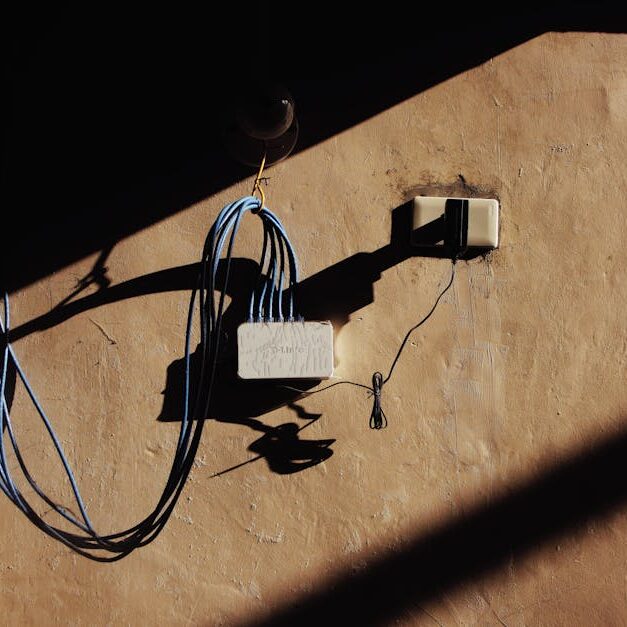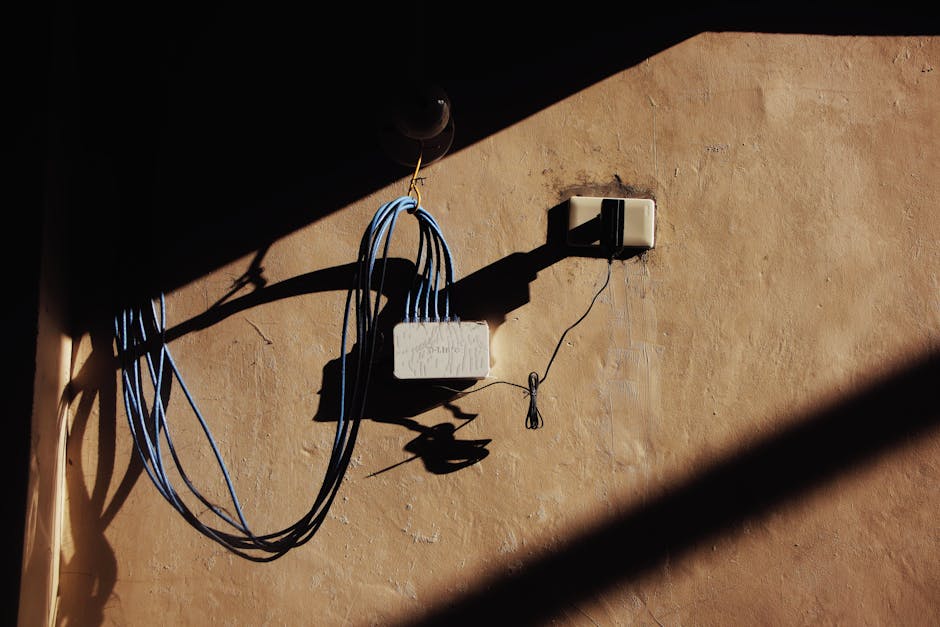Introduction: Navigating Network Wiring Options
When it comes to setting up your network, you’ll hit a fork in the road: DIY or hire a pro? It’s a big decision. On one hand, doing it yourself might save some cash, especially if you’re handy with tools and tech. On the other, bringing in a professional ensures the job’s done right the first time, no headaches later. Let’s break it down. DIY means you’re in control. You pick your materials, manage your time, and learn a ton along the way. But, there’s a catch. It demands a solid understanding of networking basics and a good chunk of your time. Mistakes? They’re on you. Hiring a professional, though, means tapping into experience and expertise. They’ve seen it all, know the best practices, and often guarantee their work. Sure, it costs more, but the peace of mind and saved time can be worth every penny. So, weigh your confidence against the complexity of your project. Remember, sometimes saving money now can cost more down the line if things go sideways.
Understanding Network Wiring Basics
To decide between DIY or hiring a pro for your network wiring, it’s crucial to grasp the basics. Think of your home network as the digital backbone of your pad, connecting all your devices and ensuring they chat smoothly. First off, you have two main types of cables: Ethernet and Coaxial. Ethernet cables, which are king for data, come in various flavors like Cat5e, Cat6, and Cat6a, with the difference mostly in speed and interference handling. The faster and cleaner the connection, the higher the category. Coaxial cables, on the other hand, are your go-to for cable TV and internet connections where high frequency is a must. When planning your network, remember route matters. Walls, floors, and ceilings can be friends or foes. And tools? You’ll need more than just enthusiasm. A crimper, cable tester, and a good ol’ drill might be your new besties. Plus, don’t forget labels. Trust me, your future self will thank you for keeping things neat and organized. Knowing this foundation will help you weigh if you’re game for a DIY adventure or if calling in a pro is more your speed.
The DIY Approach to Network Wiring: Pros and Cons
Going the DIY route for network wiring sounds tempting. It’s like taking control, and sometimes, it feels good to roll up your sleeves and dive into those cables. First off, the biggest win here is saving cash. Professional work comes with a price tag, so doing it yourself can keep those bills at bay. Plus, there’s that sense of achievement when you power up, and everything works. You’ve learned something new, and that feels great.
However, every coin has two sides. Without the right know-how, DIY can quickly turn into a mess. Think about it. Incorrect wiring doesn’t just mean no internet. It can lead to poor network performance, frustrating lags, or worse, damage to your expensive gadgets. And let’s not forget about the time. What could take a pro a few hours might end up eating your entire weekend, or even longer if things go south.
So, weigh your options. If you’re tech-savvy, with time on your hands, diving into DIY might be worth it. But if you’re unsure, perhaps leaving it to the professionals is the smarter choice. It’s not just about saving a few bucks, but ensuring your network runs smoothly and efficiently.
Professional Network Wiring Services: What They Offer
Professional network wiring services bring a lot to the table. Total Security has the expertise. We know the ins and outs of network cabling, from the latest standards to how different types of cable can affect your network’s performance. Total Security is also up on the latest technology, which means we can help you choose the right hardware for your needs. Second, they’ve got the tools. Running cables, especially through walls or ceilings, requires specialized tools most folks don’t have lying around. We come prepared, making the job faster and less likely to run into issues. Lastly, Total Security offers reliability. Professional installations come with warranties and support. If something goes wrong, you’re not on your own trying to figure it out. Plus, a properly installed network is more reliable from the start, minimizing downtime and frustration. Going professional saves time, headache, and, in the long run, can even be cost-effective, ensuring you get it right the first time.
Cost Comparison: DIY vs. Professional Network Wiring
When you’re weighing the cost between doing your network wiring yourself and hiring a professional, it’s not just about the upfront dollars. Sure, DIY can seem like the cheaper route with basic materials like cables and connectors available at a relatively low cost. A spool of Cat6 cable might set you back (100 to )200, and other essentials could tally up to not much more. But, there’s more to consider. For instance, do you have the tools you need? A quality crimping tool and tester are not cheap, and if they’re not already in your toolbox, you’ll need to factor in these costs too.
On the flip side, hiring a professional can seem steep initially. You might get quotes ranging from (500 to )2000 or more, depending on the complexity and scale of your setup. Yes, that’s a chunk of change. But, here’s the deal. Professionals bring experience, the right tools, and a guarantee of quality and efficiency. They can foresee problems you might not have considered, saving you money and headaches in the long run. Plus, a professionally done job might improve your property’s value and will definitely save you from the Google rabbit hole and potential redo’s if the DIY route goes south.
So, before you decide, weigh not just the immediate costs but also the hidden ones like your time, potential do-overs, and the peace of mind that comes with getting it done right the first time.
Key Considerations for Choosing Between DIY and Professional Wiring
Deciding between DIY and professional network wiring isn’t just flipping a coin. It’s weighing your skills, budget, and the importance of quality. Let’s break it down. Skills and Knowledge are the big players. If you’re confident in your understanding of network cabling, including Ethernet standards, and you’ve got the right tools, DIY might be up your alley. But remember, this stuff is complex. Mistakes could mean slower speeds or worse, no connection. Then there’s the Time Factor. Wiring your place can be time-consuming, especially if you’re learning as you go. Professionals zip through this kind of work daily. Budget might tilt you towards DIY, as you’re saving on labor costs. However, consider the cost of tools and materials, not to mention if things go south, the cost to fix mistakes. Lastly, consider Quality and Reliability. Professionals ensure your network’s performance and reliability. They know how to handle unexpected issues and can future-proof your setup. So, weigh your priorities, skills, and the risks involved. Making the right choice will save you time, money, and a whole lot of headache in the long run.
Essential Tools and Materials for DIY Network Wiring
When you decide to take on network wiring yourself, there’s a basic kit you’ll need to start. First, get a wire stripper; it’s key for removing the outer jacket of cabling without damaging the wires inside. You’ll also want a crimping tool. This tool is crucial for attaching connectors to the ends of your cables, making them ready to plug into devices. Don’t forget Ethernet cables; Cat5e or Cat6 are your go-tos, depending on your speed needs. A punch-down tool comes in handy for attaching wire to patch panels or keystone jacks. And, of course, you’ll need a collection of connectors (like RJ45s for Ethernet cables) and a network tester to check that your connections are solid and ready to transmit data. Lastly, a good pair of scissors or a cable cutting tool is a must for trimming cables to the right length. Remember, the right tools can make the job much smoother and ensure your DIY wiring is up to par with professional standards.
Tips for Preparing Your Space for Network Wiring
Before diving into the ocean of network cables, take a breath. Prepping your space is key. First, think about where your hub—the heart of your network—will be. A central spot is best. Next, clear the path. Furniture? Move it. Carpets? Roll them up. Make room for action. Now, label those cables. Save future-you the headache. Each cable’s path and purpose should be crystal clear. Checking your tools is another must. Got a drill? Check. Wire strippers? Check. Label maker? Triple check. Lastly, don’t go alone if you’re unsure. A buddy with some know-how can turn a mountain back into a molehill. Simple, right? Time to get your hands dirty.
Conclusion: Making an Informed Decision on Network Wiring
In the end, choosing between DIY and hiring a professional for your network wiring comes down to a balance between cost, time, and quality. DIY can save you money upfront and offers a sense of accomplishment. However, it requires a solid understanding of networking principles and risks such as improper installation leading to connectivity issues. On the flip side, professionals bring expertise, efficiency, and the peace of mind of a job well done, albeit at a higher cost. Consider your skill level, the complexity of your project, and how critical the network performance is to you. By weighing these factors, you’ll make a decision that best fits your needs and ensures a reliable and efficient home or office network. Remember, a well-planned network setup not only supports your current needs but also anticipates future expansion. Choose wisely.


